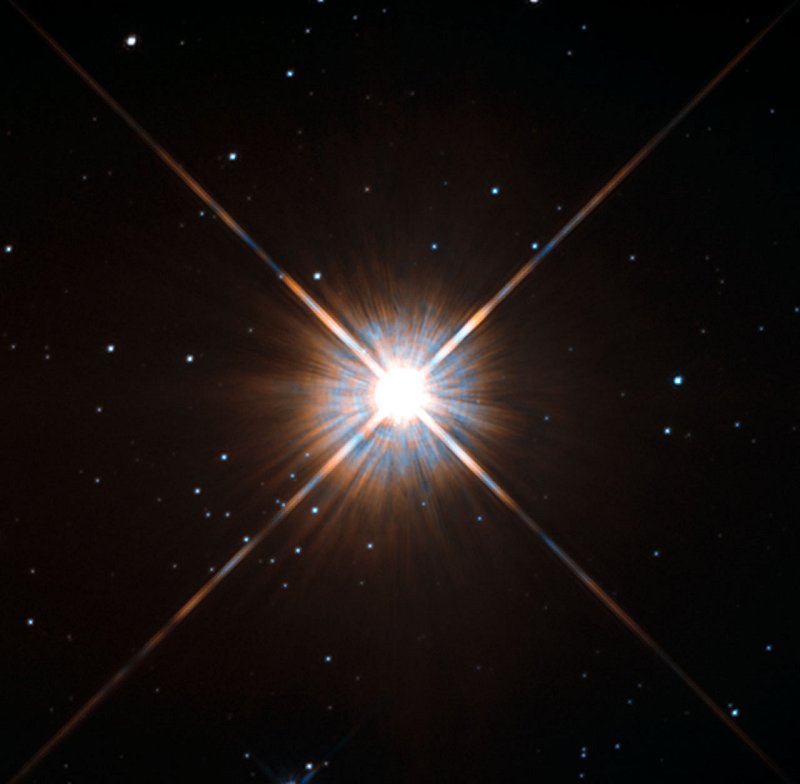Proxima
Centauri, a sublime case Proxima
Centauri is our nearest neigbour star, a red dwarf about 4.24
light-years from the Sun, inside the G-cloud, in the constellation
of Centaurus (according Wikipedia). This star is very likely
part of a triple star system with Alpha Centauri A and B. Its
orbital period may be greater than 500,000 years. "Carl Sagan lived at a time when the optimists among us hoped that maybe one out of a hundred stars might have a planet of some sort in orbit around it. His famous reference to the Earth as a pale blue dot hinted at the likely fragility of life in the Milky Way galaxy, life quite possibly confined to a single refuge in the immense void of an otherwise uncaring and oblivious universe. We now know that nearly every star we can see in the night sky has at least one planet, and that a goodly fraction of those are likely to be rocky worlds orbiting close enough to their suns to be warm and perhaps inhabitable. The search for a habitable world around Proxima Centauri is the natural outgrowth of the explosion in knowledge about exoplanets that human beings have achieved in just the last two decades of the million-odd years of our existence as a unique species on Earth. If Pale Red Dots are in orbit around Proxima, we are confident we will find them, whether they are habitable or not." - Alan Boss at Palereddot.org.
"Although it looks bright through the eye of the Hubble Space Telescope, as you might expect from the nearest star to the solar system, Proxima Centauri is not visible to the naked eye. Its average luminosity is very low, and it is quite small compared to other stars, at only about an eighth of the mass of the Sun. These observations were taken using Hubble's Wide Field and Planetary Camera 2 (WFPC2) in 1996. Proxima Centauri is actually part of a triple star system — its two companions, Alpha Centauri A and B, lie out of frame." (Hubblesite.org, November 1, 2013).
(C)
Page by RVDB, Amsterdam 2016
|

